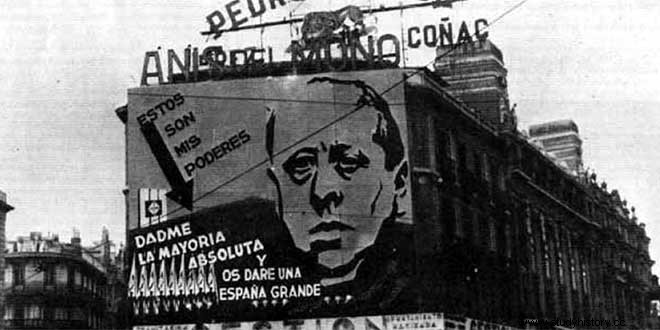The Second Republic is a stage in the history of Spain which begins on April 14, 1931, the date of the proclamation of the Republic and ends on April 1, 1939 . In January 1930, he withdrew the confidence of all the sectors that had supported him. Primo de Rivera abandons power and moves to live in Paris. Totally destroyed the liberal regime after the dictatorship, even in its fictitious version of alternations between conservatives and liberals, Alfonso XIII appoints General Berenguer as the new Prime Minister. The damage caused by the dictatorship to the political system was enormous:not only did it prevent the democratic normalization of the Restoration regime, which could have incorporated the previously excluded sectors, but it also ended the dynastic structures on which the monarchy had been based. until then. Free from the oppression of the dictatorship, the opponents of the regime, mainly Republicans and Socialists, will experience an unexpected boom. Social unrest returns to the streets. Intellectuals, such as Ortega y Gasset, Antonio Machado or Marañón, among others, sided with the republic. Old and new politicians such as Niceto Alcalá-Zamora, Miguel Maura, Manuel Azaña or Alejandro Lerroux do not hide their political option or their desire for it to be elected.
Pact of San Sebastian
In August 1930, the republican forces agreed to replace the monarchy and the main reforms that, once demolished, should be carried out . It is the so-called Pact of San Sebastián, in which parties such as Acción Republicana, Acción Republicana de Catalunya, the Radical Party, the Galician Autonomous Republican Organization (ORGA) or the Radical Socialist Republican Party participate, plus a group of intellectuals who join own title. His intention is, above all, to achieve the arrival of the republican regime. The precise definition of its characteristics and the design of its institutions are left for future Constituent Courts. The only thing that stands out, as a concession to the Catalan parties that sign the Pact, is the commitment to provide Catalonia with political autonomy.
Military situation in the Second Republic
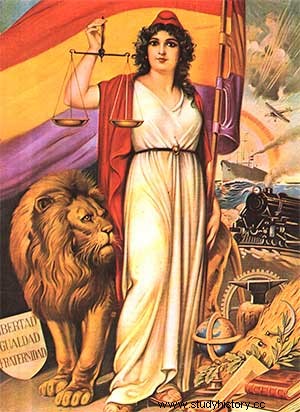
The dictatorship has also caused a division in the army:in the face of a conservative, authoritarian and monarchist majority, groups of republicans and defenders of democracy have emerged who, together with those aggrieved for professional reasons, oppose the monarchy. As a consequence of the existing differences and tensions, numerous conspiracies have sought to overthrow the Primo de Rivera regime. The conspiracy of Colonel Segundo García, in 1925, the sanjuanada of 1926 or the uprising of the artillery regiment of Ciudad Real, in 1929, are part of the extensive catalog of attempts. At the end of 1930 the republican military tried to put an end to the monarchy through an accomplished pronouncement in the city of Jaca. Its failure turns Fermín Galán and Ángel García Hernández, young officers shot the day after their action, into martyrs of the new regime that is being announced. Three days after the Jaca uprising, on December 15, the aviation tried again without success, and the political leaders of both operations (Alcalá-Zamora, Fernando de los Ríos, Largo Caballero, Miguel Maura…) were imprisoned. Others involved in the attempt to end the dictatorship (Azaña, Lerroux, Prieto...) manage to escape to France.
Elections 1931
Pressured from all possible angles, Berenguer, who has not had time to implement his dictablanda , relinquish power. Admiral Aznar takes over as head of the Government in February 1931 and immediately, just two weeks after taking power, draws up an electoral calendar that will begin on April 12, the day on which the municipal elections will take place.
The announcement of the elections and the mobilization aroused around them turns them into a plebiscite on the permanence or not of the monarchy. The Republican and Socialist candidates win in the cities, where the elections offer greater democratic guarantees as the vote escapes the control of the local bosses. In 41 provincial capitals (Madrid, Barcelona, Valencia, Seville...) the republican-socialist candidacies prevail over the monarchists.
Proclamation of the Republic
On the 13th, given the evidence of the facts, the Council of Ministers meets. The Count of Romanones, the most prominent member of the last government of the monarchy, accepting the plebiscitary nature of the elections, makes an accurate assessment of the situation that would be remembered in his memoirs:«my thesis was reduced to maintaining that even supposing And it was too much to assume that the government had the means to resist, we should not even try, because force can and should be used against revolutionary events, but there is a lack of moral force to use against demonstrations of suffrage. The Mauser is an inadequate weapon against the vote» . On the 14th, at the same time that the celebration for the result obtained began in Éibar (Guipúzcoa), a celebration that would immediately spread to Barcelona and San Sebastián, the king asked Romanones to establish contact with the republican leaders. After speaking with Alcalá-Zamora, who had been his private secretary, and corroborating that General Sanjurjo, in command of the Civil Guard, has made it known that he will not continue supporting the monarchical regime, Romanones advises the king, as the leaders demand Republicans, to leave Spain immediately. In the early afternoon, while the crowd waves republican flags in Madrid's Puerta del Sol, Alfonso XIII embarks on the path of exile. He goes by car to the port of Cartagena, where he will embark at dawn on the 15th towards Marseille. Peacefully, without violence, on April 14 the Republic is proclaimed.
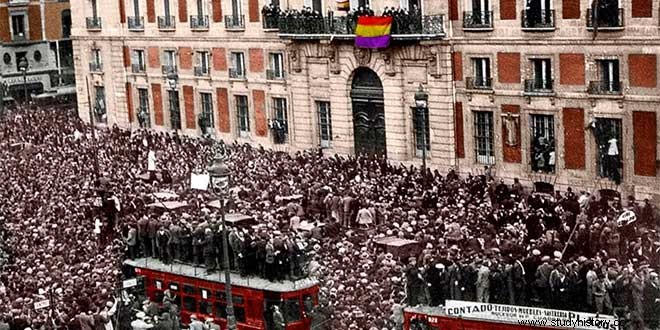
The 1931 constitution
A commission is formed to draft a draft of the new Constitution, agreeing on legislative supremacy (with a single chamber), judicial independence, recognition and autonomy for the regions, President of the Republic elected for a period of six years who appoints the head of the Government, but disagreements arise when discussing the definitive wording of article 26, which tries to normalize relations between the State and the Catholic Church, in which the State may not, in any case, favor or financially assist the churches , associations and religious institutions among other points. It is finally approved on December 9, 1931. Alcalá-Zamora is elected president of the Spanish Republic (1931 – 1936) a day later. Azaña is appointed President of the Government.
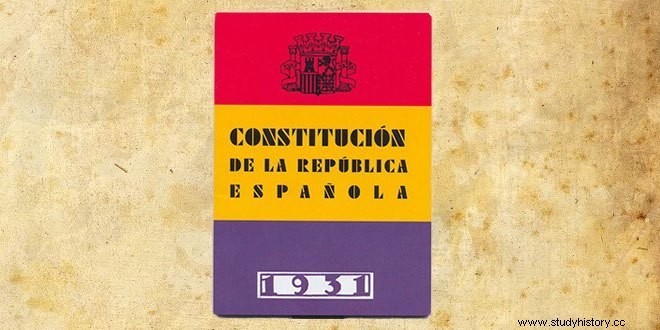
The Reformist Biennium
Catalan autonomy and land reform would be two of the most important issues addressed by the republic. The garment would play a prominent role in shaping public opinion. The educational effort made by the republic would be unparalleled throughout the 20th century. Different political parties defended historical rights and the particular Catalan identity.
After a long discussion, the Catalan autonomy statute was approved in September 1932. In force until 1939 (with a short break between October 1934 and February 1936), it would lay the foundations on which the current autonomy of Catalonia is structured. In August 1932, following the path opened by Primo Rivera, Sanjurjo executed a coup that failed spectacularly. The death sentence to which he was sentenced would be commuted to life imprisonment. In 1933, an insurrectionary movement was harshly repressed by the Civil Guard, causing a major crisis in the Azaña government.
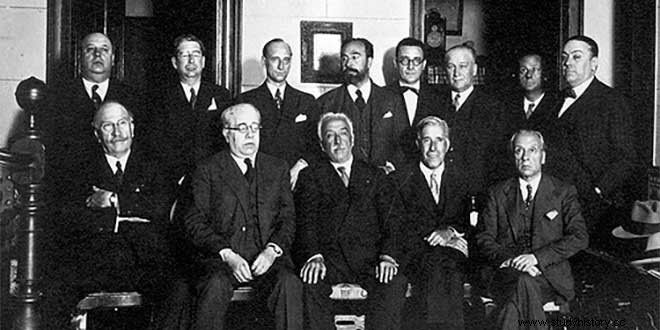
The Conservative Biennium
Although without a sufficient majority, Gil Robles' CEDA prevailed in the 1933 elections. The international economic crisis unleashed after Black Thursday of wall street, in October 1929, affected the consolidation of democracy in Spain. The revolutionary uprising of October 1934 was quelled throughout Spain except in Asturias, where the fighting lasted for a week. The strength of the mining unionism linked to the UGT would allow the first attempt at a socialist revolution in Spain. The general strike was followed by an insurrection, which was only put down after the intervention of regular troops and the Legion.
The popular front was victorious in the 1936 elections. But due to the attacks that cost the lives of Lieutenant Castillo and Calvo Sotelo, which shocked public opinion, it precipitated the plans of the military coup leaders.
